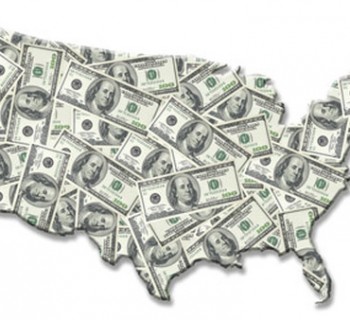 As a tool used to simplify the process of managing charitable giving, donor-advised funds (DAF) are growing in popularity. In fact, according to the 2017 Donor-Advised Fund Report from the National Philanthropic Trust, contributions to DAFs reached a record $23 billion in 2016. Fueled by the Tax Cuts and Jobs Act of 2017, many analysts expect interest to continue to grow over time. You may be asking what is a DAF and why is there so much interest in them?
As a tool used to simplify the process of managing charitable giving, donor-advised funds (DAF) are growing in popularity. In fact, according to the 2017 Donor-Advised Fund Report from the National Philanthropic Trust, contributions to DAFs reached a record $23 billion in 2016. Fueled by the Tax Cuts and Jobs Act of 2017, many analysts expect interest to continue to grow over time. You may be asking what is a DAF and why is there so much interest in them?
For charitable minded individuals, contributions to a DAF allow donors to receive an immediate tax deduction (if applicable), but delay making donations until a later time to their charities of choice. Contributions are irrevocable and funds are usually administered through investment firms, community foundations and single-issue charity sponsors. Funds can be invested within a diversified portfolio with any earnings growing tax free over time. At any time after the establishment of the account, recommendations for grants are made by the account holder to their desired qualified charities. The grants are reviewed by the DAF and then distributed to the charity.
In essence, a DAF provides some of the same features as setting up your own private foundation but without many of the administrative challenges and red tape. Unlike a private foundation, a DAF does not require the filing of IRS tax form 99-PF or other state requirements. The DAF also eliminates the need for detailed paperwork that would normally be necessary to substantiate any charitable contributions.
What assets can you donate?
Depending on the provider, a DAF can be established with as little as $5,000 and can make grants of as little as $50. (Some providers have higher or lower minimum contribution amounts.) While donations of cash and securities are allowed, contributions of non-publicly traded assets such as real estate, private business interests and private company stock are also eligible for an immediate tax deduction. Some DAFs even accept collectibles, artwork and royalties. Deductions are available for up to 60 percent of adjusted gross income (AGI) for gifts of cash and up to 30 percent of AGI for securities and other assets. A five-year carry-forward deduction on gifts in excess of AGI limits is available.
Donating highly appreciated assets and securities can be one of the most effective strategies when implementing a DAF. In fact, statistics from some of the largest donor-advised funds suggest that nearly 70+ percent of all assets contributed to a DAF are highly appreciated securities. Why appreciated assets? Donations of appreciated stock held for more than one year may allow donors to reduce or avoid paying capital gains taxes. For example, let’s assume that an investor owns $50,000 worth of stock that has a cost basis of $25,000. Rather than making a donation of cash to a charity, donating the appreciated stock may allow for a full tax deduction on the $50,000 value without paying nearly $6,000 in capital gains tax that could be owed.
DAFs and Tax Reform
The Tax Cuts and Jobs Act complicates charitable giving in 2018 and beyond. Since the standard deduction has been doubled, it is thought that fewer Americans will itemize their deductions and qualify for a charitable tax deduction. However, there may be some strategies that can help. According to Dawn Connolly, CPA and Partner at Darcy and Connolly, CPAs LLC in Spring Lake Heights, NJ, “Itemized deduction limitations have led taxpayers to consider “bunching” or lumping their deductions together in one year in order to qualify for tax deductions that they might not have otherwise qualified for.” This can be especially helpful during high income years or right before retirement when taxpayers may stop itemizing their deductions. For example, let’s assume that a taxpayer that no longer itemizes their deductions also makes charitable contributions of $5,000 each year. Rather than spreading out donations each year, lumping 3-5 years’ worth of donations into a DAF at once may allow the tax payer to qualify for an immediate tax deduction while still granting money to their charity on a yearly basis - a possible win-win scenario.
Involving the next generation
Another attractive feature of a DAF is the ability to involve the entire family in the giving process. A family can create their own DAF and discuss their goals for giving with their children. This can be a great way to instill the importance of thoughtful giving to the next generation. Successors can also be named to a DAF, enabling children to take an active role in giving, even after the original donor has passed.
DAF Considerations
One of the biggest criticisms of DAFs is that assets often end up sitting in accounts without being distributed to charity. Unlike a private foundation which requires 5 percent to be distributed annually, DAFs have no annual distribution requirement. Despite no distribution requirement, the most recent data from the NPT suggests that the overall distribution rate in DAFs often fluctuates between 20 - 25 percent in any given year. This means that there is a lot of money earmarked for charity that is sitting on the sidelines at any given time.
In addition to the satisfaction of helping others, effective charitable giving can also provide financial incentives to the donor. While a DAF isn’t appropriate for everyone’s charitable goals, it can be an effective way to organize and simplify charitable giving. Remember, no strategy assures success or protects against loss and all investing involves risk including loss of principal. Since everyone’s situation is unique, consider speaking to your legal, tax and financial adviser to determine the most appropriate approach for you.
Kurt J. Rossi, MBA, CFP®, CRPC®, AIF® is a CERTIFIED FINANCIAL PLANNERtm Practitioner & Wealth Advisor. He can be reached for questions at 732-280-7550, kurt.rossi@Independentwm.com, www.bringyourfinancestolife.com & www.Independentwm.com. LPL Financial Member FINRA/SIPC.








